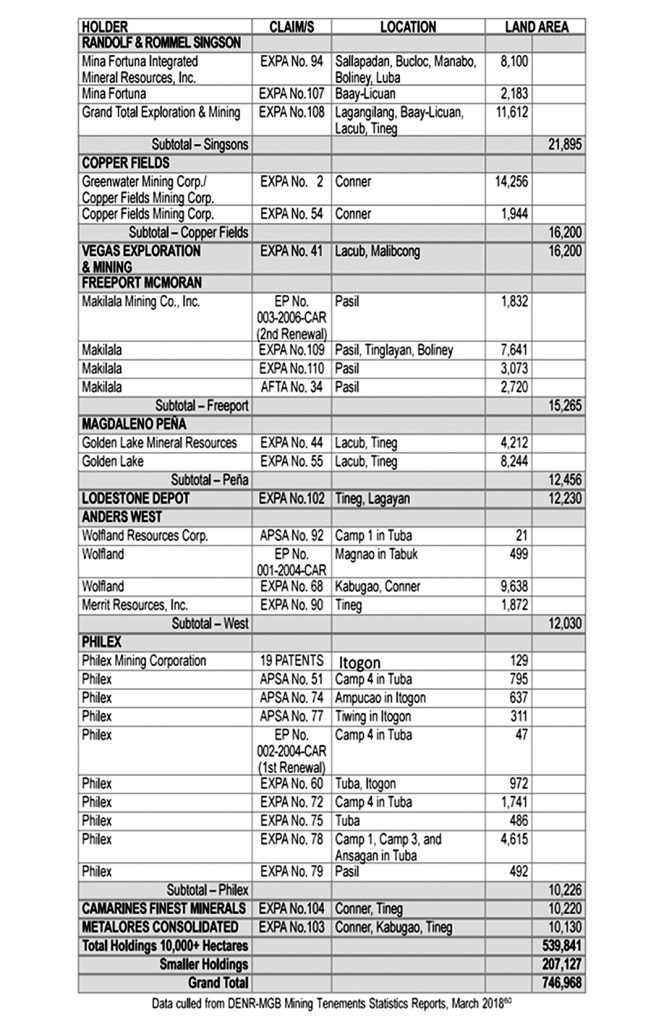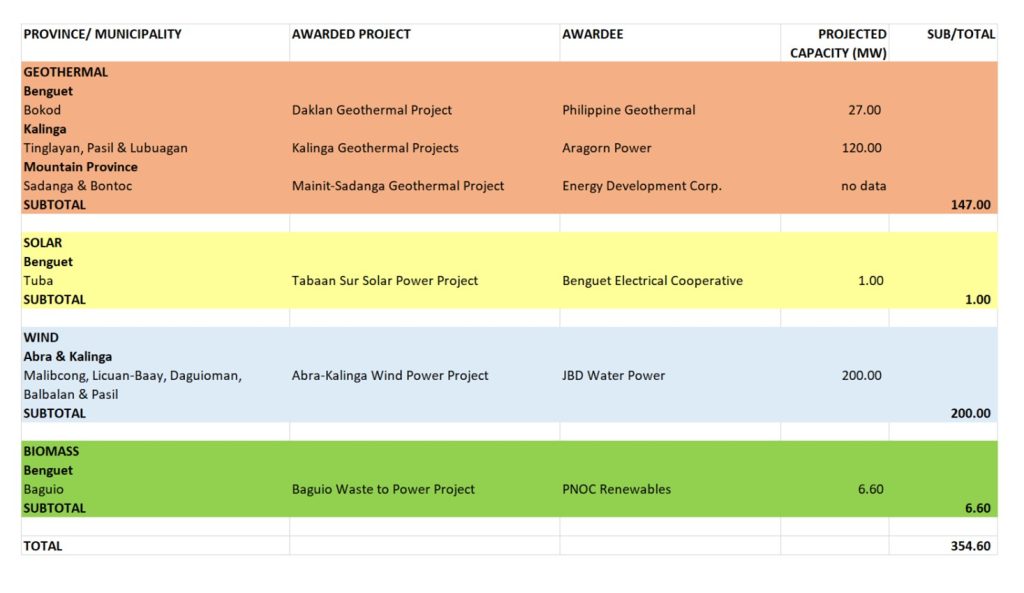May 2023
Prepared by the Alyansa dagiti Pesante iti Taeng Kordilyera (APIT-TaKo)
Philippine Statistics Authority preliminary reports on the census it conducted in 2020, place the population of the Cordillera at 1,797,660. Compared to other regions in the Philippines, the Cordillera still has the thinnest population density, at 87 persons per square kilometer (sq.km); on a national scale, the population density stands at 337 persons/sq.km. The sparsest populations are in the municipalities of Tineg (7 persons/sq.km) and Calanasan (10 persons/sq.km). The thickest populations are in the municipalities of La Trinidad (1,844/sq.km) and Baguio (6,005/sq.km).
Baguio remains the only highly urbanized city. And even if we were to add to its population those of the few urbanizing barangays in the region, we would find that the bulk of the Cordillera’s population – 63.6% – has remained in the countryside.
This rural population remains predominantly composed of indigenous peasant communities. But although they still largely persist in their traditional livelihoods – characterized by a mix of farming, river fishing, hunting and the gathering of forest products, and small gold mining – many have taken to the production of non-traditional cash crops.
In 2015, the PSA estimated that there were 396,000 households in the region. In 2019, APIT TAKO estimated that 233,000 of these were peasant households. APIT TAKO also estimated that only 26% of peasant households in the Cordillera still persisted in traditional diversified production, while 67% had already taken to commercial production of rice, corn, or vegetables, and 7% now devoted themselves to small-scale mineral production. But these estimates – already rough to begin with – are probably no longer up-to-date.
The following production map prepared by APIT TAKO in 2019 needs updating. But even in 2019, APIT TAKO probably made significant errors in characterizing unfamiliar areas, such as Kabugao and Calanasan, Apayao, where it started organizing work only in 2022.

The indigenous peasant households of the Cordillera have been threatened with displacement from both their livelihoods and their lands since time immemorial. Rich in mineral, geothermal, and hydropower resources, the region is the target of 276 mineral claims, three geothermal development projects, and 102 hydropower projects.




There has been a revival in mining since 2020, when Enrique Razon/Prime Holdings’ Apex Mining acquired and started rehabilitating the Itogon-Suyoc Mines in Sangilo, Itogon and Suyoc, Mankayan. Even while still under rehabilitation, the Sangilo mine has already been productive and was the only Apex mine to turn a profit from 2020 to 2021.
The Filipino and Japanese partnership Nickel Asia has been trying to obtain the FPIC of the peoples of Cervantes, Bakun, and Mankayan – Cervantes since 2016, Bakun and Mankayan since 2022. But it has not succeeded. It was roundly rejected by the people of Cervantes. And in Bakun and Mankayan, the FPIC it received from some communities has been taken back by those communities in recent months.
Nickel Asia asked an NCIP official to feel out Mountain Province communities. And it learned that these communities were even less hospitable to mining than those of Cervantes, Bakun, and Mankayan. But it has yet to give up its mineral claims and notify its investors/shareholders about its difficulties in obtaining FPIC.
Lepanto and its foreign partner Gold Fields thought they could skirt the FPIC requirement for their joint venture, Far Southeast Gold Resources, Inc., in Mankayan, which is covered by mineral claims that predate the IPRA. Before 2022 ended, however, the Supreme Court ruled that FSGRI was not exempted from the FPIC requirement – which it has already had a hard time complying with since the indigenous communities of Mankayan began to protest against it in 2011.
In Kalinga, however, Makilala Mining – sold by the American giant Freeport McMoRan to a smaller but better equipped Australian firm, Celsius Resources, Inc. – is said to have obtained the FPIC of the Balatoc tribe of Pasil and gotten the representatives of this tribe to sign a MOA with it. But members of the Balatoc tribe are claiming that they had never been consulted about Makilala’s mining project and are now trying to get the FPIC for this voided mainly because the project will displace the indigenous small-scale miners of the area.
Under their current Governor, James Edubba, local government officials in Kalinga are being urged to open the province’s mineral, geothermal, and hydropower resources to “development” by big foreign and Filipino capitalists.
One disturbing development in Kalinga is aggressive promotion of the urbanization of Tabuk, the Cordillera’s prime rice producer. Tabuk and the neighboring lowlands of Pinukpuk and Rizal are now home to hundreds of thousands of Kalinga who have migrated from their marginally productive villages in the mountain interior to take advantage of the richer soils, friendlier slopes, and warmer clime of Lower Kalinga to grow rice and corn on a commercial scale. But urban expansion and projects in water diversion for energy as well as other purposes might end up pushing them to the margins of the economy once again.
The region has already lost one food production capital – La Trinidad – to urban expansion. Is it to lose one more?

